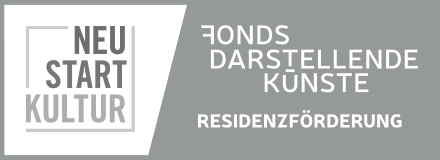
Based on the tasks set at the end of the first week of the residency:
1. To find an accurate pattern of plastic to reflect the metamorphosis by means of the performer’s expressive talent.
2. To convey the metamorphoses of the annual cycle using paper (different in texture and sound).
3. Look for noise (instrumental?) expressions of the character of each of the seasons and the changes (so-called “passages”) between them.
the work of the second week of the residency began as follows: to work out and improve the plastic score of the choreographic, dance, pantomime and emotional elements found to express the changes of the four calendar seasons. This task was realised using different means of expression – the performer’s body and paper.
As for the paper, numerous attempts were made and “field tests” were carried out with papers of different kinds of the textures, different nature of plasticity, matter and sound – wrapping paper, newspapers, craft paper etc. Butterbrot paper turned out to be the most plastic and expressive, as it gives more space for the expression of emotionally plastic scenes that are meant to reflect spring, summer, autumn and winter.

The research process was accompanied by doubts and artistic anxieties – whether the tasks set and realised will be understood by the public. These doubts plague all participants in the process. The question also arose whether it is worth announcing the topic of the search to the audience or whether they should guess that the topic of the research is the metamorphosis of the four seasons. At the end of the last day of mentoring, Mareike Buchmann said an interesting phrase: “If you tell the audience about the topic “4 seasons” in the poster or at the beginning of the presentation, then the knowledge of the topic will activate their imagination and cause a number of unexpected associations and allusions that the creators even did not even think of”. This is a vast field for research and creativity, which is seen in movement and metamorphosis by the creators who put down a certain meaning, and which the audience (knowing or not knowing the topic of the research) should recognise and to solve as the mystery. Should the knowledge of the topic become a guide for the audience or leave them to guess?
Doubts about the recognition and expediency of the search were dispelled as the second week of the residency presented many creative meetings with direct and indirect audiences. First of all, the artistic director of the Theatre in der Kurve Hedda Brockmeyer gave positive feedback on the rehearsal process and encouraged the work to continue. For this, the participants of the residency are incredibly grateful to her, as well as for all the help she has provided during the creative and search process of the residency.

Also, in search of a sound and noise design to enhance the visual and emotional effect of the metamorphosis of the seasons, it was decided to find a musician, a composer who could create a “sounding” for two parts of the presentation – the changing of the seasons through the expressive body plasticity of the performer and through the expressive metamorphosis of the paper.
The emphasis was on sound design, not music. Billy Bernhard was invited for this creative collaboration. As a practicing puppeteer who is familiar with the nature of manipulating a puppet and an object, he expressed his opinion quite sincerely after the presentation him the etudes: “The seasons are more recognisable in the body’s metamorphoses than in the metamorphoses of paper”. This is an important remark that the creators took into consideration. Billy Bernhard was given the task of finding a sound and noise series for these two plastic studies.
The meeting with the composer was also attended by Hedda Brockmeyer, who said that from her perspective, both plastic work and work with an object still carry the idea of the changing seasons. She advised not to narrow the topic of the search to just four seasons, but to explore the nature of metamorphosis in general.
It is interesting that the participants of the residency developed exactly this topic, in this formulation and definition, with their mentor Mareike Buchmann last week.
After the meeting with the composer, the participants of the residency thought that they had certainly tested many objects during the residency, but they were planning to exhibit only one – paper. It was decided to look for other objects that could accurately convey the theme of metamorphosis and the changing seasons. Martina Herring proposed to use sand as a symbol of time by placing a self-made hourglass on the stage so that the audience could watch and observe the sand flow. To install this object with the slogan: “When objects speak”.
Daria Ivanova-Hololobova supported this idea and suggested developing it further. One of the days of the second week of the residency was entirely devoted to the search for manipulations with sand – sound and visual associations that could evoke allusions and memories related to the seasons. Many creative attempts and searches were made.

At the end of this “sandy” day, the most successful plastic sketches, in the opinion of the residency participants, were gathered into a single circle of the so-called calendar year. By the will of fate, on the same day, the results of the sand manipulation research were presented to an audience of children who are pupils of the theatrical studio at the Theatre in der Kurve. To the great surprise of creators, almost all the proposed scenes were “recognised” by children. This convinced the creators that this line of research is possible. In this way, the theme “When Objects Speak” is revealed more.

Currently, the participants of the residency are working on finalising three circles of “metamorphosis of the seasons”:
They are also collaborating with the composer to find the most accurate noise and sound effects to express the themes of change and to qualitatively update the performer and the object during the presentation.

flausen+headquarters
Alexanderstraße 124
26121 Oldenburg
flausen+gGmbH
Klävemannstraße 16
26122 Oldenburg
Das überregionale Netzwerk flausen+ wird gefördert von dem Beauftragten der Bundesregierung für Kultur und Medien über das Programm “Verbindungen fördern” des Bundesverbands Freie Darstellende Künste e.V.
Gefördert vom Fonds Darstellende Künste aus Mitteln des Beauftragten der Bundesregierung für Kultur und Medien im Rahmen von NEUSTART KULTUR.
Gefördert vom Fonds Darstellende Künste aus Mitteln des Beauftragten der Bundesregierung für Kultur und Medien.



